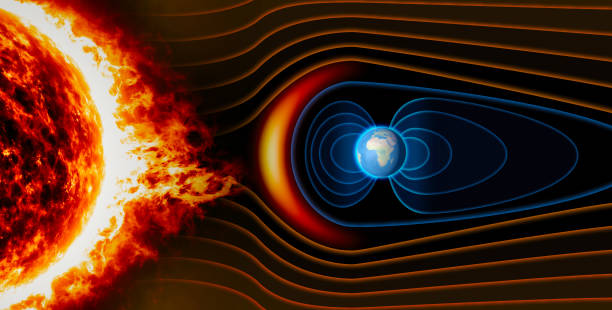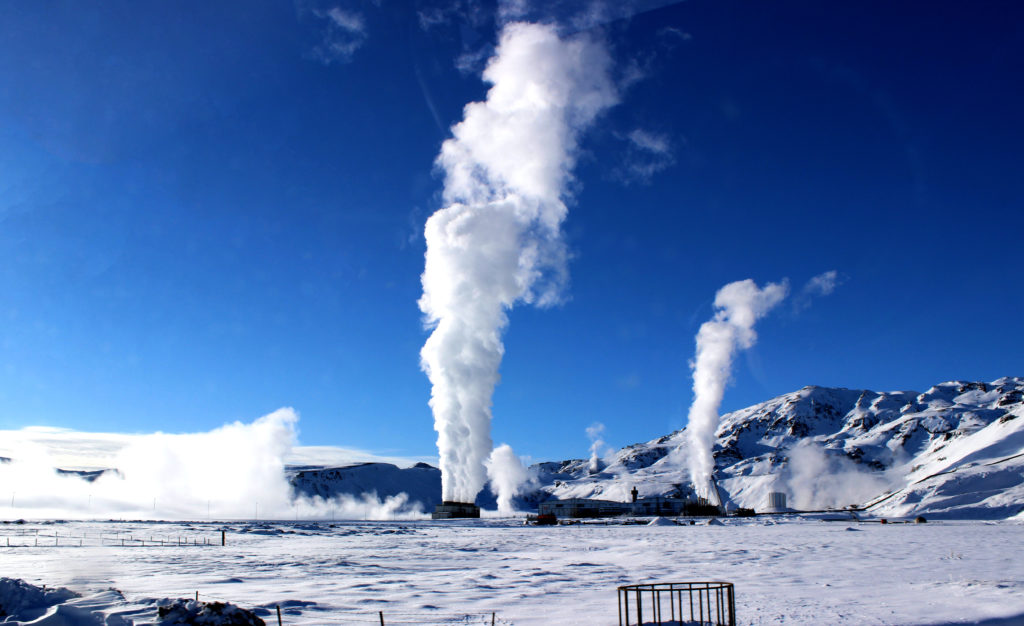High above the surface of our blue planet, where satellites glide and solar winds blow, an invisible guardian stands watch. It doesn’t shimmer in the daylight, nor can we touch or see it. Yet, without it, life as we know it could never exist. This silent, persistent presence is Earth’s magnetic field—a vast, dynamic forcefield generated deep within our planet and extending far into space. It shields us from cosmic radiation, shapes weather patterns, guides migratory animals, and even leaves its fingerprints in the rocks beneath our feet. But its true story is stranger and more profound than most realize.
The Earth’s magnetic field is not merely a curiosity for compass makers or a playground for physicists; it is one of the most crucial systems sustaining our planet’s habitability. Its origins lie in the fiery heart of the Earth, but its reach extends far beyond the clouds. To explore Earth’s magnetic field is to understand not just our planet’s geology and physics, but the very conditions that make life possible.
The Compass Within: How It All Begins
Imagine descending through the Earth’s crust, passing through the mantle’s flowing rock, and diving deep into the scorching core, where temperatures rival those of the sun. There, more than 3,000 kilometers beneath the surface, lies the source of the magnetic field: the outer core. This vast ocean of molten iron and nickel churns endlessly, stirred by heat from the inner core and the planet’s slow rotation. As these liquid metals swirl and spiral, they generate electric currents—a phenomenon known as the geodynamo.
The geodynamo is the beating heart of the magnetic field. Like a cosmic dynamo generator, it transforms kinetic energy into magnetic energy, giving rise to a field that loops from pole to pole and wraps Earth in a cocoon of magnetic lines. Though we often think of the magnetic field as resembling a bar magnet, the reality is far more complex. It wobbles, shifts, pulses, and occasionally flips entirely—a process known as geomagnetic reversal.
This natural dynamo has operated for at least 3.5 billion years, and without it, Earth would be exposed to deadly solar radiation, like a ship without a hull in a stormy sea. It is this force that bends solar winds around us, diverts charged particles, and protects our atmosphere from being stripped away.
The Dance of the Aurora: Where the Field Meets the Sky
Perhaps the most spectacular evidence of Earth’s magnetic field can be seen in the polar skies, where ribbons of green, purple, and red shimmer across the heavens. These are the auroras—borealis in the north, australis in the south. And they are the glowing footprints of the magnetic field in motion.
When charged particles from the sun—traveling as the solar wind—collide with Earth’s magnetic shield, they are funneled toward the poles along magnetic field lines. As these particles plunge into the upper atmosphere, they interact with oxygen and nitrogen atoms, releasing bursts of light. The result is a hypnotic celestial dance that has captivated humans for millennia.
To early observers, auroras were omens, messages from the gods, or spirits in the sky. Today, we know they are the result of space weather—a direct interaction between the solar wind and our planet’s magnetic armor. During powerful solar storms, these auroras can extend far beyond their usual polar bounds, gracing skies as far south as Mexico or as far north as the Mediterranean.
But auroras are more than just a light show; they are living proof of our planet’s magnetic field doing its job—deflecting and absorbing the charged fury of the sun.
Navigating the World: The Compass Connection
Long before we understood the science of magnetism, humans relied on its invisible pull to chart their journeys. In ancient China, more than 2,000 years ago, early compasses were crafted from lodestones—naturally magnetized rocks that aligned themselves north-south. Sailors across cultures, from Arab navigators to Norse seafarers, used the steady whisper of magnetism to find their way across the open seas.
The compass became a symbol of exploration, guiding age-of-discovery voyages and opening the world to maps and trade. But what made it possible was Earth’s magnetic field—its quiet, unwavering guidance pointing toward magnetic north.
Yet here lies a twist: magnetic north is not the same as true north. It drifts and shifts, often unpredictably. In fact, magnetic north is currently racing across the Arctic at a rate of about 50 kilometers per year, moving from Canada toward Siberia. This drift is a direct result of changes in the fluid dynamics of Earth’s core, where the magnetic field is born.
For modern navigators and satellite systems, this movement must be constantly updated. Organizations like NOAA and the British Geological Survey produce regularly updated models to ensure accurate GPS systems, aviation paths, and maritime routes. Even today, in the digital age, the magnetic field remains a vital compass.
A Shield Against the Void: Why It Matters for Life
One of the greatest, and least appreciated, roles of Earth’s magnetic field is its protection against space radiation. The sun, though life-giving, hurls vast amounts of energy into space, including solar flares and coronal mass ejections. These eruptions release torrents of high-energy particles capable of damaging electronics, scrambling satellite systems, and, most critically, stripping away planetary atmospheres.
Without a magnetic field, Earth might resemble Mars. Though our red neighbor once had flowing water and perhaps a thicker atmosphere, today it is a barren, desiccated world, battered by radiation. Mars lacks a strong magnetic field, and over billions of years, its atmosphere has been eroded by solar wind.
Earth’s field, by contrast, forms the magnetosphere—a teardrop-shaped zone of protection that envelops the planet. It deflects most solar particles away and traps others in the Van Allen radiation belts—two concentric layers of charged particles circling Earth like invisible armor.
This magnetic protection ensures the stability of our atmosphere and, by extension, the continuity of life. Without it, the DNA of living organisms would be subject to relentless cosmic bombardment, making complex life unlikely.
Magnetic Reversals: When the Field Flips
As reliable as Earth’s magnetic field may seem, it is not permanent in its orientation. Throughout geological history, the magnetic poles have reversed—north becoming south, and vice versa. These geomagnetic reversals have occurred many times, irregularly spaced over millions of years.
The last full reversal, called the Brunhes-Matuyama reversal, occurred about 780,000 years ago. Since then, the magnetic field has experienced several excursions—partial or temporary shifts. Scientists studying the lava flows, ocean sediments, and ancient artifacts can trace these changes, thanks to the way magnetic minerals align with the prevailing field as they cool.
Reversals are not catastrophic in themselves. Life has persisted through them many times. However, during the transition period—often thousands of years long—the magnetic field weakens, possibly reducing our planet’s defenses against radiation.
Some researchers worry that a weakening field, like the one observed today, could be a precursor to a reversal. The South Atlantic Anomaly, a region over South America and the southern Atlantic Ocean, already shows an unusual weakening of the field. Satellites passing through this region experience higher radiation levels, and engineers must account for this in spacecraft design.
Still, while a reversal might be disruptive to modern technology, there’s no evidence it would trigger apocalyptic consequences. What it does remind us of is that even the forces we consider constant are in fact fluid, evolving, and tied to the deep inner workings of our planet.
Magnetism and Migration: Nature’s Inner Compass
The animal kingdom has long known what humans only recently confirmed—Earth’s magnetic field can be felt, sensed, and followed. From birds that migrate thousands of kilometers to turtles that return to the exact beach where they were born, many species rely on magnetoreception—a biological ability to detect magnetic fields.
European robins, for instance, can sense magnetic inclination—the angle at which the field lines intersect the Earth. This helps them determine latitude. Sea turtles imprint on the magnetic signature of their birthplace and later use that memory to navigate oceans. Even tiny bacteria contain chains of magnetic crystals that guide them through aquatic environments.
The mechanisms behind magnetoreception are still being studied. Some researchers suggest the presence of magnetite crystals in animal tissues. Others propose quantum entanglement processes in proteins like cryptochrome in birds’ eyes. The answers may lead us not only to a deeper understanding of animal behavior but to the potential for new kinds of navigation technology.
What is clear is that Earth’s magnetic field is deeply embedded in the biology of life itself—a natural signal that evolution has finely tuned over millennia.
Measuring the Invisible: Tools of the Modern Geomagnetic Explorer
In modern science, measuring Earth’s magnetic field is a precise and high-tech endeavor. Satellites like ESA’s Swarm mission orbit the Earth to map its magnetic field in incredible detail, revealing how it changes over time and across regions. Ground-based observatories, some of which have been operating for over a century, track the local variations and feed global magnetic models.
Scientists also use magnetometers—highly sensitive instruments that detect changes in magnetic intensity. These tools can be deployed on aircraft, ships, and even on backpacks in urban environments. Archaeologists use them to detect buried structures, while geophysicists use them to map subsurface rock formations.
The resulting data is more than just academic. It helps forecast space weather events that could disrupt power grids or harm astronauts. It informs drilling companies and mineral explorers. And it helps model the Earth’s interior, offering clues about processes we can never observe directly.
Every map, every model, every measurement peels back another layer of mystery from this invisible but essential force.
A Field in Flux: The Future of Earth’s Magnetism
As scientists monitor the magnetic field, one message becomes increasingly clear: the field is changing. It is weakening overall, especially in places like the South Atlantic Anomaly. The magnetic poles are moving, and the geomagnetic north is approaching Siberia at unprecedented speed.
These changes are part of the Earth’s natural magnetic evolution, but they pose challenges for navigation, communication, and satellite technology. The question of whether we are heading toward another reversal lingers, but no one can say for certain when—or if—it will happen.
Yet amidst this uncertainty, there is wonder. The Earth’s magnetic field is not static, but alive. It breathes through the molten core, sways with solar winds, and pulses with the heartbeat of the planet itself. It reminds us that the Earth is not just a rock floating in space—it is a dynamic, living world, shaped by forces both seen and unseen.
Conclusion: The Silent Guardian of Earth
In an age where headlines are dominated by climate change, technological revolutions, and space exploration, it’s easy to overlook the quiet forces that make all of this possible. Earth’s magnetic field doesn’t clamor for attention. It hums in the background, a silent protector, an ancient compass, a thread connecting the depths of the core to the edges of space.
To explore it is to embark on a journey from the molten heart of our planet to the dancing lights of the aurora. It is to uncover the mechanisms that have guided life, protected ecosystems, and enabled civilizations to rise and explore.
The next time you see a compass needle twitch or gaze upon the shimmering curtains of the northern lights, remember: you are witnessing a phenomenon that stretches back billions of years and may shape the future of our species. Earth’s magnetic field is not just a scientific curiosity—it is the pulse of the planet.






